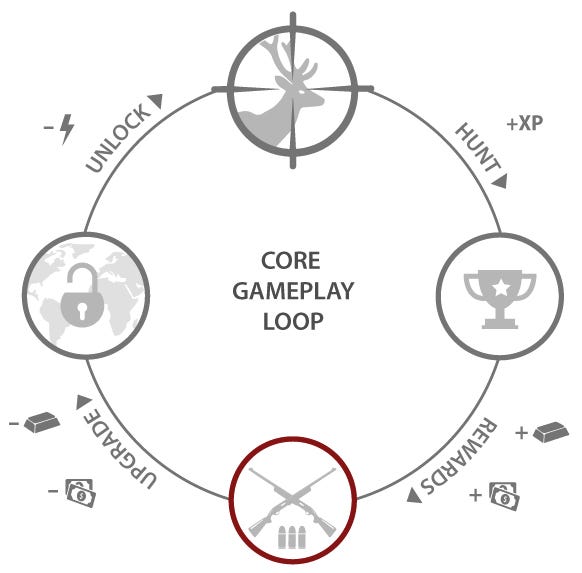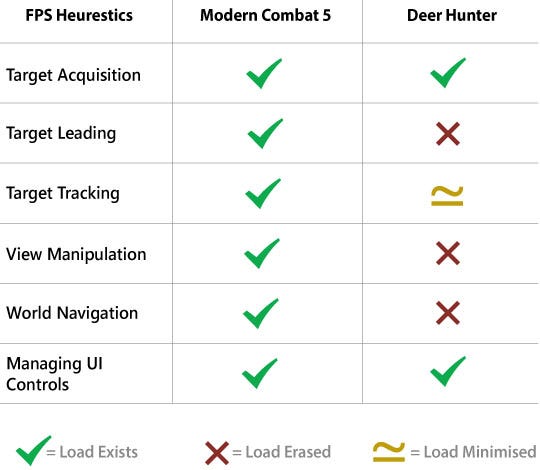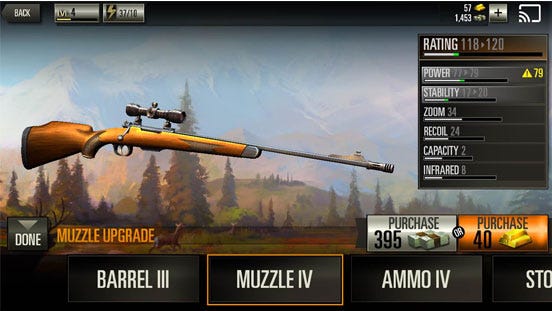Trending
Opinion: How will Project 2025 impact game developers?
The Heritage Foundation's manifesto for the possible next administration could do great harm to many, including large portions of the game development community.

Featured Blog | This community-written post highlights the best of what the game industry has to offer. Read more like it on the Game Developer Blogs or learn how to Submit Your Own Blog Post
In first part of this post we looked at how some mobile devs. are getting around the problem of building convincing FPS experiences on mobile by reducing friction and loads, this follow up article looks at the other extreme of erasing friction or loads.


In Part 1 of this post, we looked at how mobile developers get around the problem of building convincing FPS experiences on mobile devices by reducing friction and providing extensive control settings for easing various parameters and magnitudes that a player has to typically manage on PC and consoles.
An approach which I call the 'Kitchen Sink'.
While 'kitchen sink' approach works to an extent for most hard core players craving for undiluted FPS experience on mobile, it creates high barriers into entry for mid-core and newer-to-the-genre casual players.

Some developers realise there are scores of young-adult players (who are now in their late 20's or early 30's) are dedicated FPS players of popular franchises like COD, TF2, GOW, DOOM on pc and console. But now as working adults, parents or in middle years, they simply do not have the luxury of time and the intense focus and dedication required for steep learning curves for hard core games. There are now other pressing priorities!

However, having been a ardent fan of the genre in the past, they still miss & crave for the adrenaline rush and thrill such games can offer.
It's just a question of identifying the market gap and providing this user base with avenues to fulfil their indulgence. Enter Glu Mobiles "Deer Hunter" and Hothead studios "Killshot" franchises.
Both games simplify the core loop of seeking and hunting targets by giving players the ability to do so at their own pace and convenience, with dramatically reduced and marginalised loads that make playing these games relatively a breeze for newbies and young adults alike.
Deer Hunter series has been long running successful franchise for Glu mobile, with Deer Hunter 2014 being one of it's most successful flagship brands.
Premise of Deer Hunter is a simple one adapted from famous PC series where players get to hunt animals in exotic locations around the world. For some people (including me) the concept of hunting wild animals may seem brutal, but for those into game hunting, it's a good avenue (definitely better then real hunting!). Deer Hunter does a good job of showing refined visuals which look convincing enough without being too gross.
Deer Hunter's core gameplay is essentially FPS based on energy mechanic with forced upgrades.

However if you compare it with heuristics we had defined in the first part which a typical FPS games demands from it's player base, you will see that the DH series totally erases many of them from it's gameplay.
.jpg/?width=461&auto=webp&quality=80&disable=upscale)
Target Acquisition: Player has to effectively acquire or lock on moving or static targets in order to score a kill.
Target Leading: Player has to effectively lead. For example, if an opponent is moving to the right of the player, the player should be able to easily target the mental proxy in order to successfully hit the opponent.
Target Tracking: Player has to track moving targets without constantly needing to reacquire the target. For example, if an opponent is moving to the right, the player should be able to smoothly and consistently follow the opponent without losing track.
View Manipulation: Player can manipulate the camera in any direction to complete the leading, tracking and acquiring tasks. A difference in speed at which player can manipulate the world view will affect his ability to track & lead fast moving targets.
World Navigation: The player should be able to navigate X, Y and Z axis in the game to over-come obstacles or jump over objects.
Managing UI Controls: Along with all the above said tasks, player has to be ablw to manage UI controls of load outs, abilities, switching scopes, using boosts, firing controls, reloading and/or changing weapons.
Game controllers map these onto the UI which helps reduce the load as they provide better mapping. But these are not part of standard mobile experiences.

A quick glance above shows how loads are being erased in DH series compared to MC-5 resulting in a game play which, though not meant for hard core players, drastically lowers the steep learning and mastery curve while providing the adrenaline rush to casual and young adult players in small manageable time frames.

MC-5 vs DH 16 HUD
.jpg/?width=646&auto=webp&quality=80&disable=upscale)
At one glance you can see the difference in number of HUD controls between the 2 games. The HUD only has the scope button on the left and fire button on the right sides, with arrows to move left to right or back and forth, depending on the level design.
This type of HUD controls stem from the fact that ERASING of loads (as in case of DH-16) directly results in reduction of controls, since then the player has less loads to manage and master.
From Matt and Gregor's player personas we saw above, it's all about a shift in priorities. Games have to adapt to maturing players lifestyle.
.jpg/?width=526&auto=webp&quality=80&disable=upscale)
In their early teens and twenties both Matt and Gregor, could easily fit and manage their TIME and schedule around games.

But today, to cater to their demanding pace of life, it's the GAMES that have to fit in to their time and schedule!
This shift in life style is what makes mobile the preferred device of choice because of it's close proximity to this ageing player population irrespective of situational context, be it while commuting to work, waiting on the tube station or a quick break to the washroom. There is always time to snick a quick round of FPS experience without going through too many menus and choices.
.jpg/?width=646&auto=webp&quality=80&disable=upscale)
But the load is not just erased in core gameplay area alone...load easing is also reflected in the UI flow of two games.
Games like MC 5 offer elaborate load-out menus with a plethora of gear, ammo, armour, weapons and sidearm choices for player to equip before entering battle
.jpg/?width=552&auto=webp&quality=80&disable=upscale)
.jpg/?width=552&auto=webp&quality=80&disable=upscale)
Above are just few screens from an humongous base of inventory choices that MC-5 players have to make before entering a session. it's all about making decisions, decisions and decisions! (which also implies that the player has to learn what each choice can do and remember them all as all choices have consequences).
While above choices will excite purists, for an young adult player with a minute or two to spare time is of essence. He wants to be quickly where the action is & not lost in labyrinth of choices and decision making!
DH series has adapted it's UX/UI screen flows to bring players to the gameplay screen as soon as possible without burdening them with choice bias overload.
While DH series has an extensive inventory (content is crucial for shelf life of a game after all!), it does not leave the burden of decision making and consequences of those choices to the player.
.jpg/?width=552&auto=webp&quality=80&disable=upscale)
Player is prompted to upgrade weapons at right intervals in the game as a warning.

Clicking on upgrade button takes player directly to the best possible match without going through all the inventory and racking their brains to make a choice.
Another way load out boosts are surfaced are directly inside the game session where player can choose to purchase or utilise stacked boosts, without the need to equip anything outside the core loop, at the gameplay screen itself, quickening the flow of game, making sure it fits inside the bite sized sessions.

The above flow ensures player does not spend time too much time going through a gamut of screens. All they have to do is log in and go straight to the gameplay screen, the game auto-corrects and auto-informs players when and where to update and upgrade gear.
Between MC-5 and DH-16 series, we see how similar FPS genre targeted at different player segments (hard core vs young adults and casual players) has been adapted to cater to different market segments.
It is interesting to see how by using different approaches of easing and erasing loads, developers can dramatically alter the user experience offered to the players based on their market segmentation and expectations, recreating successfully one of the most popular genre which has been traditionally a PC and console stronghold on mobile.
For the purists, search for a true FPS contender with more intuitive and satisfying gameplay on mobile still continues.
If you liked this post, you can check out my other Game UX Deconstructs. Feel free to connect with me for my future article
Read more about:
Featured BlogsYou May Also Like